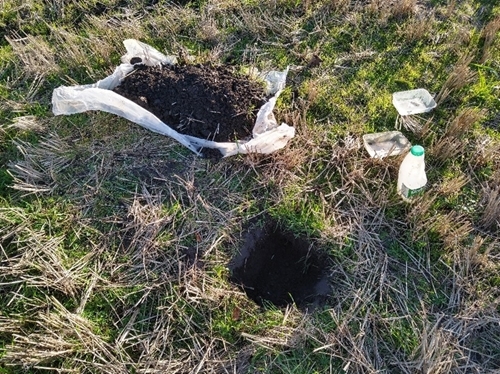By Fiona Torrance, GWCT Scotland Farmland Biodiversity Advisor and Project Manager for the PepsiCo FAB project
Historically, Scottish agri-environmental schemes have found it difficult to find a balance between establishing measures for biodiversity and ensuring that the system itself works for farmers. As was seen during research carried out by the Interreg PARTRIDGE project, many Scottish land managers wanted more flexibility, whilst also wanting a system that rewarded farmers appropriately for work they had done.
The PepsiCo FAB project is fortunate to count NatureScot as one if its participating partners. In addition to providing useful knowledge and contacts, NatureScot’s involvement in the project has meant that it has been given the opportunity to test some of the tools that may feature in Scottish agri-environmental schemes of the future and support the development of the agricultural reform programme.
These app-based tools are being developed as part of NatureScot’s Farming with Nature programme, which is supporting farmers and crofters to recognise the benefits of habitats and biodiversity on their land. Their POBAS (Piloting and Outcomes Based Approach in Scotland) project, looked at ways farmers could assess and then manage their own habitats for improved environmental outcomes. This helped inform their current project, which is to develop a Biodiversity Audit that could be used by all farmers across Scotland.
The first two stages of the Biodiversity Audit are to create a baseline map, and look at some basic habitat assessment tools for key habitats. The simple tool developed to allow users to build the audit is through the Farm Biodiversity Scotland app. Testing these tools in advance allows the Farming with Nature team to ensure the projects are co-designed by the users, and that the app will perform well when it is made available to farmers across Scotland.
For the PepsiCo FAB project, we were tasked initially with testing the hedgerow and field scorecards. These scorecards are being developed as a way for farmers to assess the quality of specific habitats on their farm as part of the Biodiversity Audit. The farmers access them via the app and go through a simple series of questions. These will inform a ‘red, amber or green’ assessment level. NatureScot were particularly interested in how easy the farmers found the app to use, the clarity of the questions, and whether the potential answers to questions were appropriate for each of the six different project farms.
For the hedgerow scorecard, Fiona, Project Manager and Farmland Biodiversity Advisor, walked several hedges with the farmers and assessed different types of hedges that were present. This often prompted discussions about the value of hedges for biodiversity and got the farmers thinking about how they could improve their hedge management practices.
The team were also involved in testing the scorecard to assess the soil structure of arable/pastural fields. This proved to be a lot more challenging, with the wettest autumn in many years making digging holes in the ground near impossible. However, we did manage to get round some of the farms to do this and found comparing the numbers of earthworms between pits more interesting than perhaps some expected!
 The arable/pastural field scorecard involved counting the number
The arable/pastural field scorecard involved counting the number
of earthworms found in test pits. (Credit: Fiona Torrance)
Latterly, the team have also been involved in testing NatureScot’s habitat mapping protocol, which is being created to provide a baseline map of habitats as part of the Biodiversity Audit. Again, this is being developed through the app as well as a web-based platform, which will be a tool for use by farmers in the future. This looks at the farm as a whole, with features including cropped land, woodland, wetland and habitats for nature being plotted via app. For this task, the Scottish Lowlands placement students Rachael and Bella have taken the lead, providing valuable feedback on how the habitats are classified and where there might be areas of ambiguity.
This all sounds great but I’m sure you’re asking, what did the farmers think of it? We found that the farmers that took part in the testing were generally supportive of the way the app operates. They found that the app was easy to use, and the questions generally clear and, with a few tweaks, felt that they would be able to use it themselves.
NatureScot has found the testing extremely useful. Maria de la Torre, the NatureScot representative on the project team said: “It has been invaluable to test some of the habitat assessments and mapping with the PepsiCo FAB project team and farmers, and get feedback. This is helping refine how we adapt and develop new tools to identify and assess biodiversity and habitats. NatureScot has been commissioned by the Scottish Government to develop a biodiversity audit to help farmers and crofters baseline map their habitats, with the assessment helping to inform appropriate management to maintain and improve biodiversity on farmland. We will be developing the work to date through further testing this summer. Biodiversity audits are expected to become part of whole farm plans under the Agricultural Reform Programme, and our project is directly informing this.”